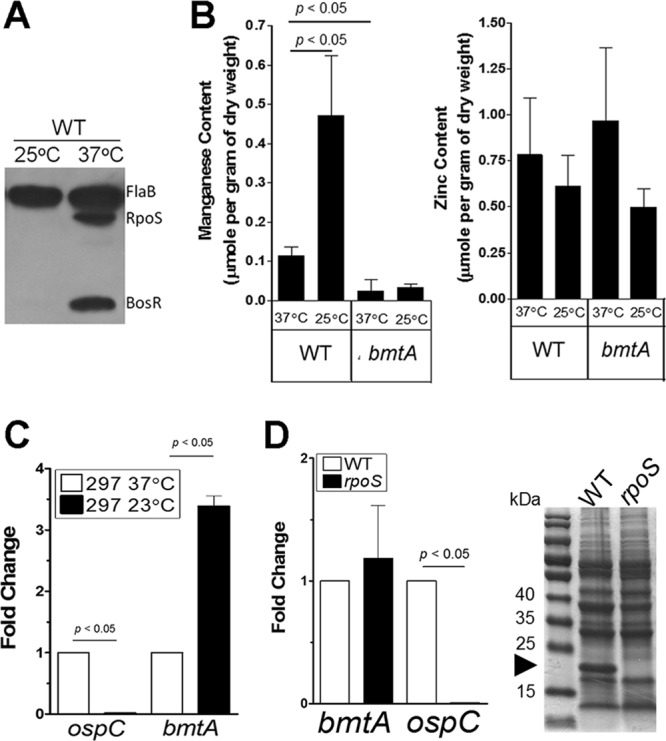Fig 1.

Intracellular manganese content inversely correlates with temperature-dependent activation of RpoS and OspC. (A) Immunoblot analysis demonstrating an RpoS “on” condition when wild-type B. burgdorferi strain 297 was cultivated at 37°C and an RpoS “off” condition when cultivated at 25°C. The level of BosR correlated well with expression of RpoS. The constitutive active FlaB serves as a control. Results are representative of two separate experiments with 3 replicates per experiment. (B) Metal analysis by inductively coupled plasma mass spectrometry (ICP-MS). The parental strain 297 (WT) and the isogenic bmtA mutant were grown in standard BSK-II medium at 37°C or at 25°C. Samples were harvested at the stationary phase and analyzed for intracellular Mn2+ (left panel) and Zn2+ (right panel). Data represent the means ± standard deviations (SD) of 3 independent samples from two separate experiments. (C) Expression of bmtA is temperature dependent. Wild-type B. burgdorferi strain 297 was grown in standard BSK-II medium at 37°C or 25°C and harvested at the stationary phase. RNAs were extracted from 3 independent cultures, and expressions of flaB, ospC, and bmtA were determined by qRT-PCR. Data were normalized to 1,000 copies of flaB, and the fold changes are shown with expressions at 37°C set to 1. Significance was determined by Student's t test. (D) Expression of bmtA is RpoS independent. Wild-type B. burgdorferi 297 and the isogenic rpoS mutant were grown in standard BSK-II medium at 37°C and harvested at the stationary phase. Expressions of flaB, ospC, and bmtA were determined by qRT-PCR from total RNA extracted from 3 independent cultures. Cell lysates were separated by SDS-PAGE, and a representative Coomassie blue-stained gel is shown in the right panel. The arrowhead indicates the band corresponding to OspC.
